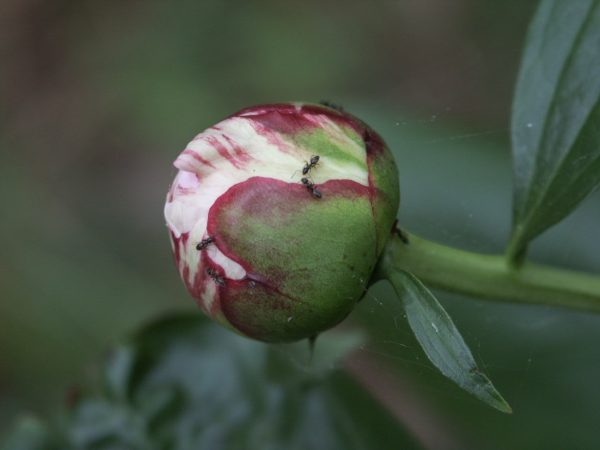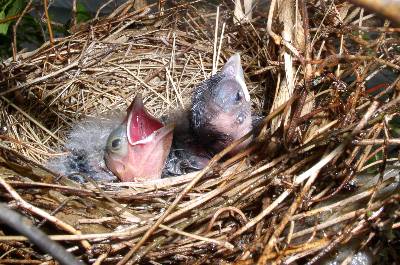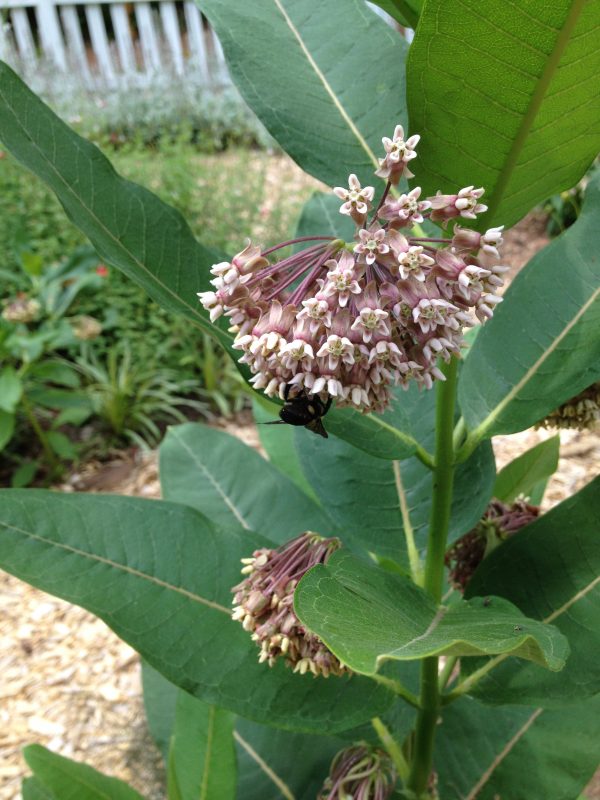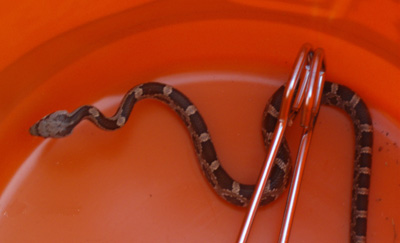Corn, Sweet
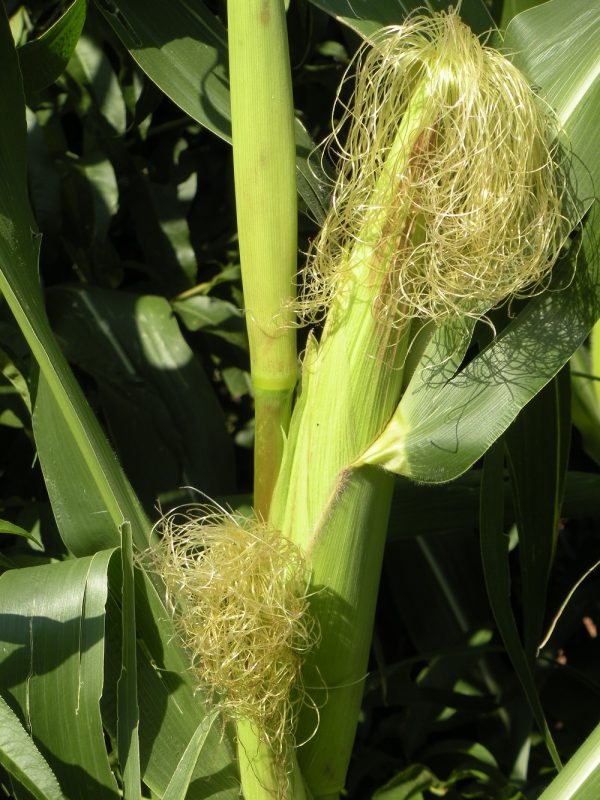
Zea mays var. rugosa
Who can resist a steaming hot ear of fresh-grown corn on the cob? Being a native crop, it is more American as apple pie. Sweet corn was developed from common field corn. Field corn is harvested after it has matured, and it is used for innumerable products from cereals to livestock feed to chemicals and sweeteners.
• More detailed information can be found in The Georgia Fruit & Vegetable Book by Walter Reeves and Felder Rushing
• For more corn information visit: Home Garden Corn Varieties,
Sweet corn is harvested before it matures while it is tender and the sugar content is at its highest. Because sweet corn converts is sugar to starch rapidly upon harvest, old-time gardeners say that to appreciate the “sweetest” sweet corn, plant the patch close to the kitchen; when the corn is ready for harvest, start the pot of water boiling, and just as it reaches a full boil, pick the corn. Husk it as you run to the kitchen and then pop it into the pot.
The original sweet corn varieties were open pollinated, and very few can be found anymore. Some open-pollinated examples include ‘Golden Bantam’, ‘Country Gentleman’, and ‘Double Standard’. Today, almost all named varieties of sweet corn are hybrids and do not come true from saved seed. Three types are currently available: standard, sugary enhancer, and supersweet. Standard (SU) varieties of sweet corn contain a “sugary gene” making them sweet and creamy, but they quickly lose their sweetness after harvest. Unless the corn is rapidly cooled, the sugars are converted to starch. The newer hybrids have been developed to reduce this tendency. Sugary enhancer (SE) types are the ones of choice for the home gardener. They have superior texture and flavor, and they do not need to be separated from other kinds of corn to prevent cross-pollination. They have a higher sugar content and stay sweeter longer. Supersweet hybrids have a higher sugar content than the other two types, and they hold their sugar longer. The kernels have a tougher skin and lack the creamy texture of the standard and sugary enhancer varieties. Growing supersweet varieties is a challenge because the seeds do not germinate well, and the supersweet varieties need to be isolated from other types of corn to prevent cross-pollination. Yet despite the challenge, some home gardeners and community gardeners prefer it because it keeps very well, and some people like the crisp texture better than the creamy SE types.
WHEN TO PLANT
Begin planting the earliest varieties during the first week of May or about the frost-free date (average date of last frost) in your area. For continuous harvest, stagger plantings every two weeks, or plant varieties that mature at different dates.
WHERE TO PLANT
Sweet corn needs full sun (8 to 10 hours will suffice), good drainage, and lots of room. Unless your garden is large (100 by 200 feet or so), you may want to secure space in a community garden for your sweet corn. Quite a few plants are needed to provide enough corn at one time for a meal. Most varieties produce only 1 ear per plant, so you will need at least 12 plants that mature simultaneously to provide 12 ears for your family.
HOW TO PLANT
Apply a complete garden fertilizer, such as 10-10-10, at a rate of 11/2 pounds per 100 square feet of garden. Spade or rototill the soil. Sow seeds 1/2 inch deep in cool soils early in the spring, or 1 1/2 inches deep as the soil warms later. Space the seeds 9 inches apart in the rows, with 24 to 36 inches between rows. Plant 3 or more rows of each variety side by side to assure pollination. Since cross-pollination between white and yellow sweet corn affects color (though not necessarily sweetness), prevent cross-pollination by planting different kinds several yards apart, with other crops in between, or plant early, midseason, and main crop varieties (which, again, provides a continuous supply of sweet corn all summer). Make the first planting of SU or SE varieties about the frost-free date with an extra-early variety such as ‘Earlivee’. Make a second planting of a later variety such as ‘Spring Treat’. For the main crop, plant a favorite such as ‘Kandy Korn’. Make additional plantings of your favorite varieties when seedlings of the previous planting have 3 leaves. Keep in mind that later plantings will be more susceptible to drought and insect damage.
CARE AND MAINTENANCE
Control weeds by hoeing the rows. Once the corn is tall enough, it will shade out weed seedlings. When the plants are about 11/2 feet tall, side-dress them with a complete fertilizer, such as 10-10-10, at the rate of 1 pound per 100 square feet of garden. Water is important as the plants are tasseling and making silk. Pollination takes place then and will be poor if the plants are wilted. Kernel development takes water too. Once the silks begin to dry, be sure to keep the plants from wilting by providing about 1 inch of water per week. When the plants reach head height, overhead watering by using sprinklers will be difficult. Flooding or soaking will be necessary at that point, and you can use soaker hoses if you have a small plot. Some pests and diseases may pose a problem. The most common pest is corn earworm, which affects later-developing plantings; apply an approved garden insecticide to the silks as the pollen is being shed (you’ll be able to see it on everything) to reduce numbers of the pest. Smut disease causes a mass of nasty fungus to grow out of corn ears. Plant resistant varieties, or you can actually cook the fungus as a Mexican food delicacy.
ADDITIONAL INFORMATION
Harvest sweet corn as soon as the ears are filled out and the kernels are milky inside, usually about 20 days after silks appear. Keep corn cool and use as quickly as possible.
VARIETIES
Variety Name
Days to Maturity
Comments
OPEN POLLINATED
Country Gentleman
96
White
Double Standard
73
Bicolor
Golden Bantam
82
Rich corn flavor
BICOLOR
Bi Queen
92
Similar to Silver Queen; SW, NCLB
Butter and Sugar
75
Adapted to home gardens
Honey and Cream
80
Commonly grown for sale at road-side stands and community markets
Honey and Frost
80
SW, S, R NCLB, SCLB
Quickie
64
Earliest bicolor
Sugar and Gold
67
Better in cooler climates
STANDARD – WHITE
Pearl White
75
Cold soil tolerant
Platinum Lady
86
Tender
Silver Queen
92
Top-quality white, good disease resistance; SW, NCLB
STANDARD YELLOW
Earlivee
58
Extra early
Golden Cross Bantam
85
Old-time favorite
Jubilee
82
Midseason; S
NK-199
84
Extra-deep kernels, a personal favorite
Sundance
69
Good early
SUGARY ENHANCER
Bicolor Ambrosia
75
Large, tasty; SW
Calico Belle
79
Delicious; SW, R
Peaches & Cream
83
Popular garden variety, glitzy name
Seneca Dawn
69
Early, vigorous plants, quality eating
SUGARY ENHANCER – WHITE
Cotton Candy
72
Fancy name, extended harvest
Divinity
78
All-around excellent variety; SW
Pristine
76
Top quality; SW
Seneca Starshine
71
Tender, flavorful
Spring Snow
65
Very early, tender
Sugar Snow
71
Very sweet, good in early cool weather
SUGARY ENHANCER – YELLOW
Bodacious
72
Superior quality, needs warm soil for good start
Champ
68
Excellent, early
For Heaven’s Sake
Variable
Bred specifically for home gardens; ears mature at different times to spread harvest
Kandy Korn
89
Top quality, keeps well
Miracle
84
Large, tasty ears; SW, S, R, NCLB
Precocious
66
Excellent, very early
Spring Treat
67
Nice straight rows of kernels, very early
Terminator
83
Large ears
Tuxedo
75
Vigorous, excellent quality, try this one; SW, S, R, NCLB, SCLB
SUPERSWEET – BICOLOR
Candy Corner
76
Popular at community markets
Honey ‘N Pearl
78
AAS
Serendipity
82
So-called TripleSweet‚Ñ¢ with enhanced flavor and shelf life
SUPERSWEET – MULTICOLOR
Indian Summer
79
Red, white, yellow and purple kernels. AAS
SUPERSWEET – WHITE
How Sweet It Is
85
AAS, does not tolerate cold soil; SW, NCLB
SUPERSWEET – YELLOW
Challenger
76
Excellent early; SW, NCLB
Early Xtra Sweet
70
Similar to original
Illini Xtra Sweet
85
The first supersweet hybrid
Jubilee Super Sweet
83
Best for home gardens; S
Legend
68
New, early
TRIPLESWEET‚Ñ¢
Honey Select
79
AAS. This is a new type that combines SE and SH2 characteristics in one variety. Designed for home gardens
Abbreviations for disease resistance:
NCLB=Northern corn leaf blight, R=common rust, S=corn smut,
SCLB=Southern corn leaf blight, SW=Stewarts Wilt. (MDM=Maize dwarf mosaic virus is just becoming a problem in garden-grown sweet corn; resistance will be added to some current varieties as they are improved.)



